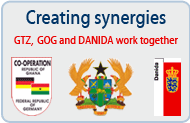



The Support Programme for Enterprise Empowerment and Development (SPEED) started in 2004. SPEED Ghana facilitates the development of the financial market and also business development services for Ghana's micro, small and medium enterprises, which contributes to their increased competitiveness. SPEED Ghana supports intermediaries such as business development service providers and micro finance institutions to deliver market oriented and sustainable technical and financial services. SPEED is based in Ghana's capital Accra. It operates nationwide with a particular focus on supporting the Northern and more rural region.
Stride length, hip and knee function
Biomechanical factors associated with elite runners include increased hip function, use and stride length over recreational runners. An increase in running speeds causes increased ground reaction forces and elite distance runners must compensate for this to maintain their pace over long distances. These forces are attenuated through increased stride length via increased hip flexion and extension through decreased ground contact time and more force being used in propulsion. With increased propulsion in the horizontal plane, less impact occurs from decreased force in the vertical plane. Increased hip flexion allows for increased use of the hip extensors through midstance and toe-off, allowing for more force production.
The difference even between world class and national level distance runners has been associated with more efficient hip joint function. The increase in velocity likely comes from the increased range of motion in hip flexion and extension, allowing for greater acceleration and velocity. The hip extensors and hip extension have been linked to more powerful knee extension during toe-off, which contributes to propulsion. Stride length must be properly increased with some degree of knee flexion maintained through the terminal swing phases, as excessive knee extension during this phase along with footstrike has been associated with higher impact forces due to braking and an increased prevalence of heel striking. Elite runners tend to exhibit some degree of knee flexion at footstrike and midstance, which first serves to eccentrically absorb impact forces in the quadriceps muscle group. Secondly it allows for the knee joint to concentrically contract and provides major aid in propulsion during toe-off as the quadriceps group is capable of produce large amounts of force. Recreational runners have been shown to increase stride length through increased knee extension rather than increased hip flexion as exhibited by elite runners, which serves instead to provide an intense braking motion with each step and decrease the rate and efficiency of knee extension during toe-off, slowing down speed. Knee extension however contributes to additional stride length and propulsion during toe-off and is seen more frequently in elite runners as well.
Sponsored by:
Technical Assistance to Financial Institutions
Developing Skills